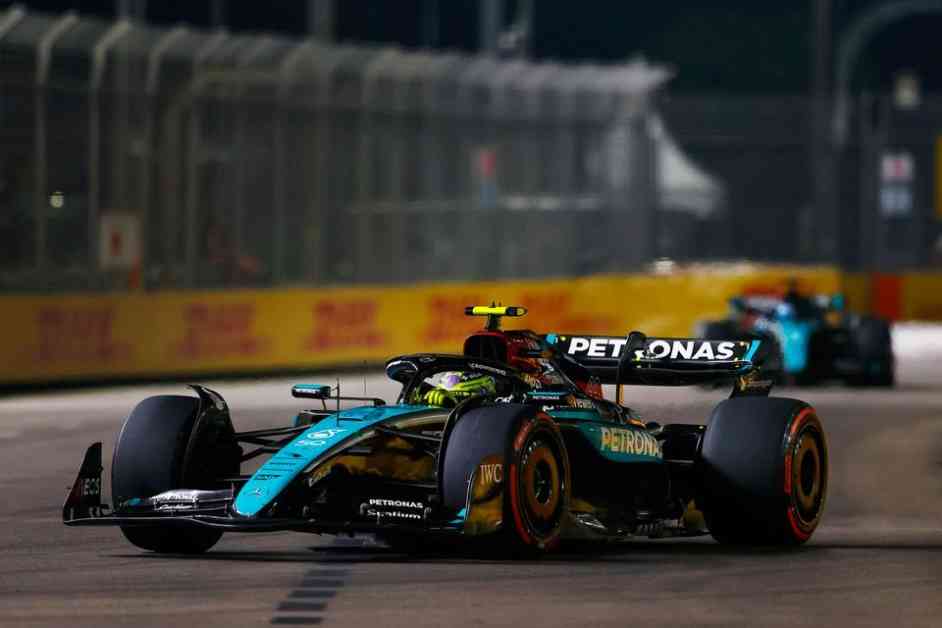Mercedes’ Mistake: Hamilton’s Singapore F1 Strategy Blunder
Toto Wolff, the team principal of Mercedes-AMG F1 Team, openly admitted that they made an error in judgment when it came to Lewis Hamilton’s strategy at the Formula 1 Singapore Grand Prix. Despite Hamilton’s impressive performance in qualifying, securing third on the grid behind Lando Norris and Max Verstappen, the race itself did not unfold as planned.
The decision to start Hamilton on the red-walled soft tyre, along with Daniel Ricciardo, deviated from the majority of the field opting for the more durable medium tyres. This choice was based on the belief that the soft tyre would provide an advantage at the start, a crucial overtaking opportunity in a track known for its narrow confines and limited passing opportunities. However, the strategy backfired as Hamilton struggled with tyre degradation, forcing him to pit earlier than anticipated and ultimately finishing in sixth place.
Wolff reflected on the strategic error, stating, “I think we’ve read the race wrong. We took a decision based on historic Singapore races where it is basically a procession, Monaco-like, and that the soft tyre would give him an opportunity at the start. That was the wrong decision that we all took together jointly. It felt like a good offset but with the rear tyre deg that we had it was just one way and that was backwards.”
Unforeseen Challenges on the Marina Bay Circuit
The Marina Bay Circuit in Singapore presents unique challenges for teams and drivers due to its tight and twisty nature, as well as the high temperatures and humidity that can affect tyre performance. While the expectation was for a processional race with limited overtaking opportunities, McLaren’s superior pace allowed Norris to push harder in the opening stint, stretching out a lead that Hamilton struggled to close.
The decision to start on the soft tyres, intended to gain an advantage at the start, ultimately proved to be a hindrance as the tyre degradation impacted Hamilton’s ability to maintain a competitive pace. The team’s miscalculation highlighted the importance of adapting to the specific conditions of each race track and reevaluating strategies based on real-time data and performance indicators.
Strategic Maneuvers and Controversies
Despite the strategic misstep, the Singapore Grand Prix saw other teams employing different tactics to gain an edge. Daniel Ricciardo’s decision to start on the soft tyres from the back of the grid did not yield the desired results, leading to an additional pit stop and a pursuit of the fastest lap to deny Norris an extra point.
Speculation arose regarding potential collusion between Red Bull and RB to influence the race outcome, given their shared connections. However, Wolff dismissed any claims of foul play, emphasizing the importance of utilizing all available strategies within the regulations to maximize results.
“I think you’ve probably got to play all your strategies that you have,” Wolff stated. “I don’t think it was dirty play, not at all, it could come down to a point. It is within the regulations, the drivers weren’t unfair with each other. I think it is just about who scores an extra point. No big deal.”
Conclusion
The Singapore Grand Prix served as a reminder of the unpredictable nature of Formula 1 racing, where strategic decisions can make or break a team’s chances of success. Mercedes’ misjudgment of Hamilton’s strategy highlighted the importance of adapting to changing conditions and learning from mistakes to improve performance in future races.
As the championship battle intensifies, teams will need to remain vigilant and flexible in their approach to maximize their chances of success. The lessons learned from the Singapore Grand Prix will undoubtedly shape Mercedes’ strategy moving forward, as they seek to regain their competitive edge and challenge for victory in the remaining races of the season.












